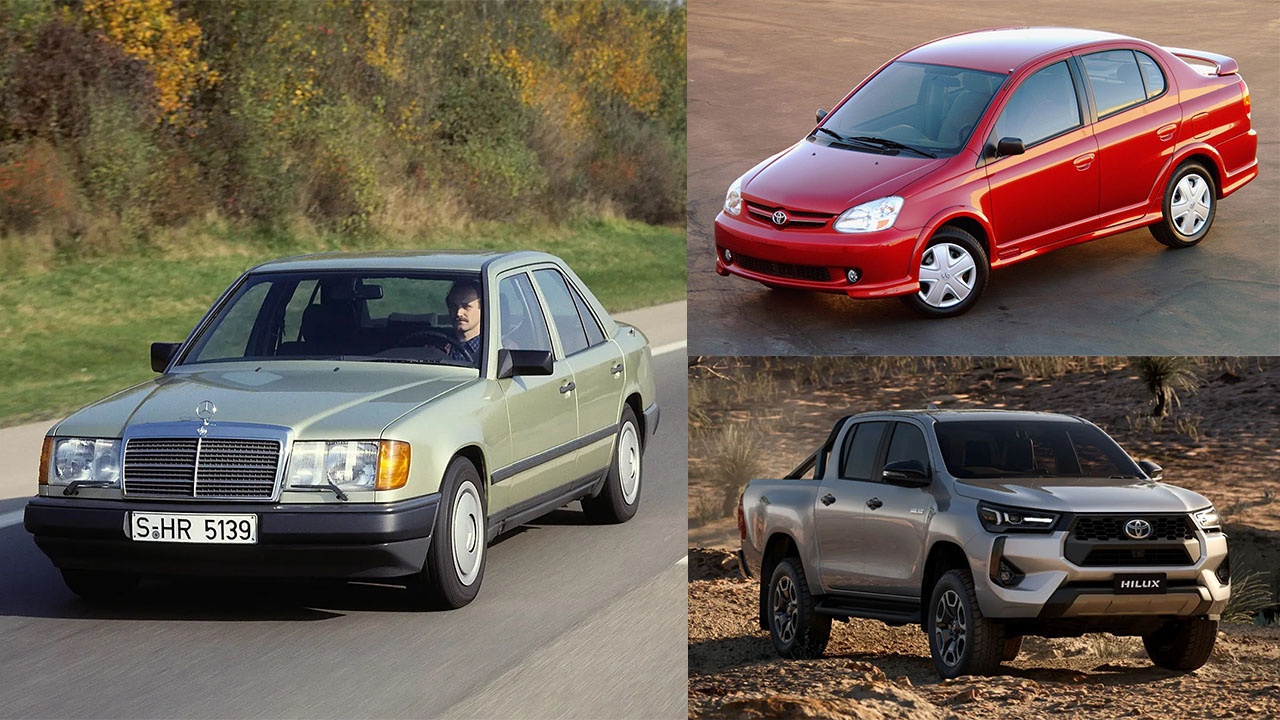Compiling a list of the most dependable vehicles often leads to an abundance of Toyotas and Hondas. These brands have become synonymous with durability and longevity, producing enduring SUVs, trucks, and hybrid models.
Though it might be repetitive to include only Toyota and Honda, we’ve diversified this list with other noteworthy entries from different categories. It spans a variety of vehicle types, with the exception of the compact SUV segment.
To understand reliability, it’s essential to first grasp the concept of longevity. Older vehicles were typically less complex, which meant fewer potential failures. Without features like ECUs, there was less that could disable a vehicle or force it into limp mode.
Currently, the average vehicle lifespan is about 200,000 miles or 12 years. However, features like Mercedes-Benz’s Hyperscreen illustrate how some cars are designed with planned obsolescence in mind.
While such tech looks cutting-edge now, one can only imagine how it’ll appear a dozen years from today.
Most Reliable Cars
That’s precisely why most of the vehicles featured on this list are from earlier eras. Fewer components mean fewer opportunities for something to go wrong.
1. Lexus LS 400
We’ll begin with a car that, interestingly enough, goes against the very point made just a few paragraphs ago. The LS 400 earns the top spot on this list because it represents the pinnacle of over-engineering.
Toyota realized early on that it needed something extraordinary to take on the well-established European luxury brands. That’s when the project known as “Flagship” kicked off in the early 1980s backed by what was essentially a blank check.
The resulting Lexus LS bore no resemblance to any other Toyota vehicle, as the automaker gave itself nearly unattainable goals. It was, in many ways, the Japanese equivalent of Ferdinand Piëch’s ambition with the Bugatti Veyron in the 1980s.
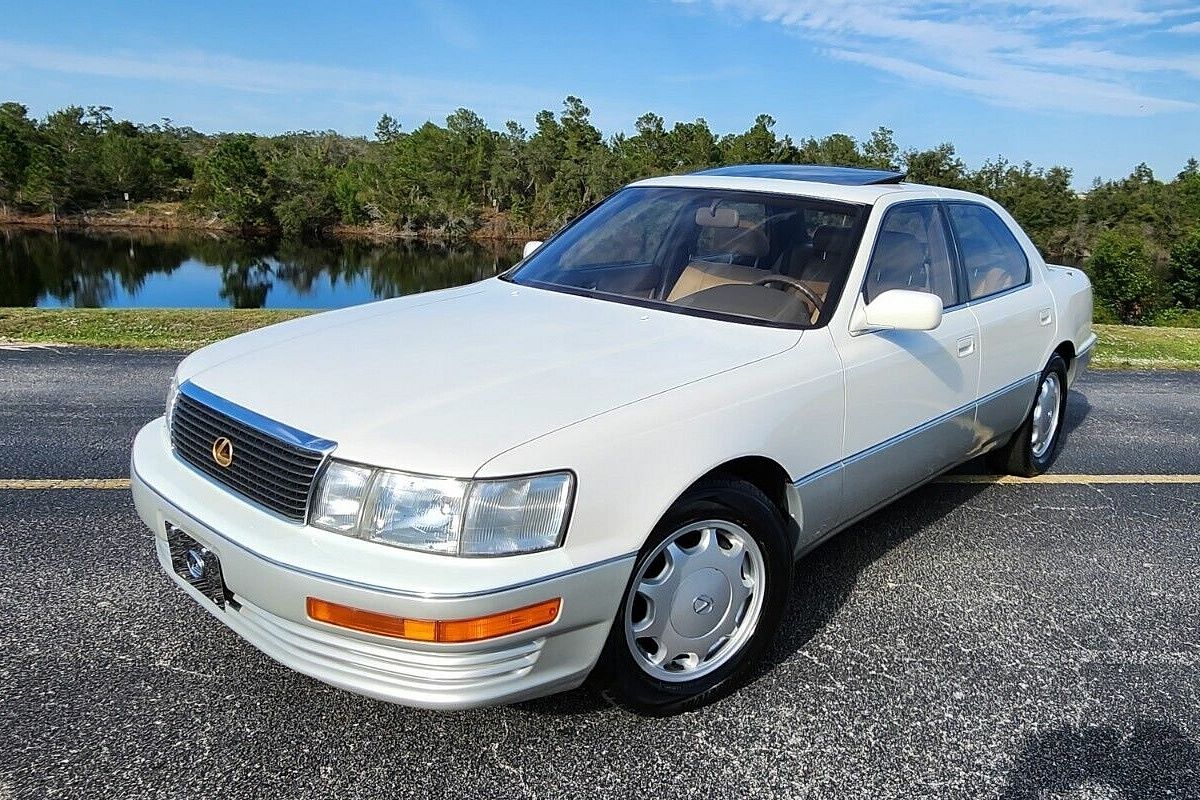
The development team for the “Flagship” project was impressive in its scale and specialization, including:
- 60 designers
- 1,400 engineers, divided into 24 teams
- An additional 2,500 support personnel
One could fill an entire book with the story behind this car, but a few details illustrate just how meticulous the development process was.
The team tested 24 different types of wood and numerous leather samples over two years before selecting the final materials for production.
In fact, one engineer was solely responsible for perfecting the damping feel of the control buttons. You can still feel that attention to detail when you sit in a well-preserved LS 400 in 2024 it continues to exude luxury and refinement.
Its build quality was so exceptional that the car has gained a reputation for being practically indestructible, which leads us right into the next entry on our list.
2. Toyota Hilux
The Toyota Hilux gained legendary status after Top Gear proved its durability by relentlessly trying to destroy it over the course of an entire season only to eventually give up and enshrine it on a pedestal.
While all generations of the Hilux have a reputation for reliability, the sixth generation, produced from 1997 to 2004, is widely regarded as the most rugged of them all. There is still ongoing debate about which engine variant reigns supreme in terms of durability.
Buyers had the option between a 3.0-liter naturally aspirated diesel and the turbocharged 3.0-liter KZ-TE engine. The latter delivered 123 horsepower and 218 lb-ft of torque at just 2,000 rpm, with a redline of 4,400 rpm.

It’s an engine that runs with the same calm demeanor as a beachgoer lounging on vacation with no worries in the world.
Combine that low-stress engine with a tough-as-nails chassis built to endure relentless punishment for decades, and the Hilux becomes an unbeatable workhorse.
And should the need for repairs ever arise, finding parts is rarely a problem you could likely source 99.9% of the sixth-generation Hilux’s components from a small corner shop in rural Zambia.
Though the Hilux stands as the most famously durable of Toyota’s truck lineup, it’s worth acknowledging the Tacoma, Tundra, Sequoia, and 4Runner.
The latter, in particular, shares significant DNA with the Hilux, so many of the same arguments apply to its reliability and toughness.
3. Toyota Camry
If you’re in the market for something more contemporary than the W124 Mercedes-Benz don’t worry, we’ll get there the Camry might be exactly what you’re after.
The same can be said for the Lexus ES, which shares its underpinnings with the Camry. The reason the Camry has become one of the most dependable vehicles on the market comes down to its inherent simplicity.
It features a transverse-mounted four- or six-cylinder engine, a straightforward front-wheel-drive layout (though all-wheel drive eventually became available), a spacious interior with room for five, and a generously sized trunk.
Even the most recent versions have stuck closely to this proven formula. The addition of hybrid powertrains has done nothing to compromise the model’s reputation if anything, it’s only improved fuel efficiency without sacrificing reliability.
The same philosophy applies to the Corolla, which is another straightforward and trustworthy offering from Toyota.
The 2025 Toyota Camry enters a new era with a noticeably fresh approach. Having held the title of best-selling passenger car in the United States for more than twenty years, it’s long been known for reliability, everyday practicality, and a no-frills charm.
Now sporting a fully hybrid lineup and an aggressive new design, Toyota isn’t just reacting to rivals like the Honda Accord and Hyundai Sonata — it’s doubling down. The Camry continues to dominate sales charts annually, and with the release of this latest generation, there’s no reason to believe that trend will change.
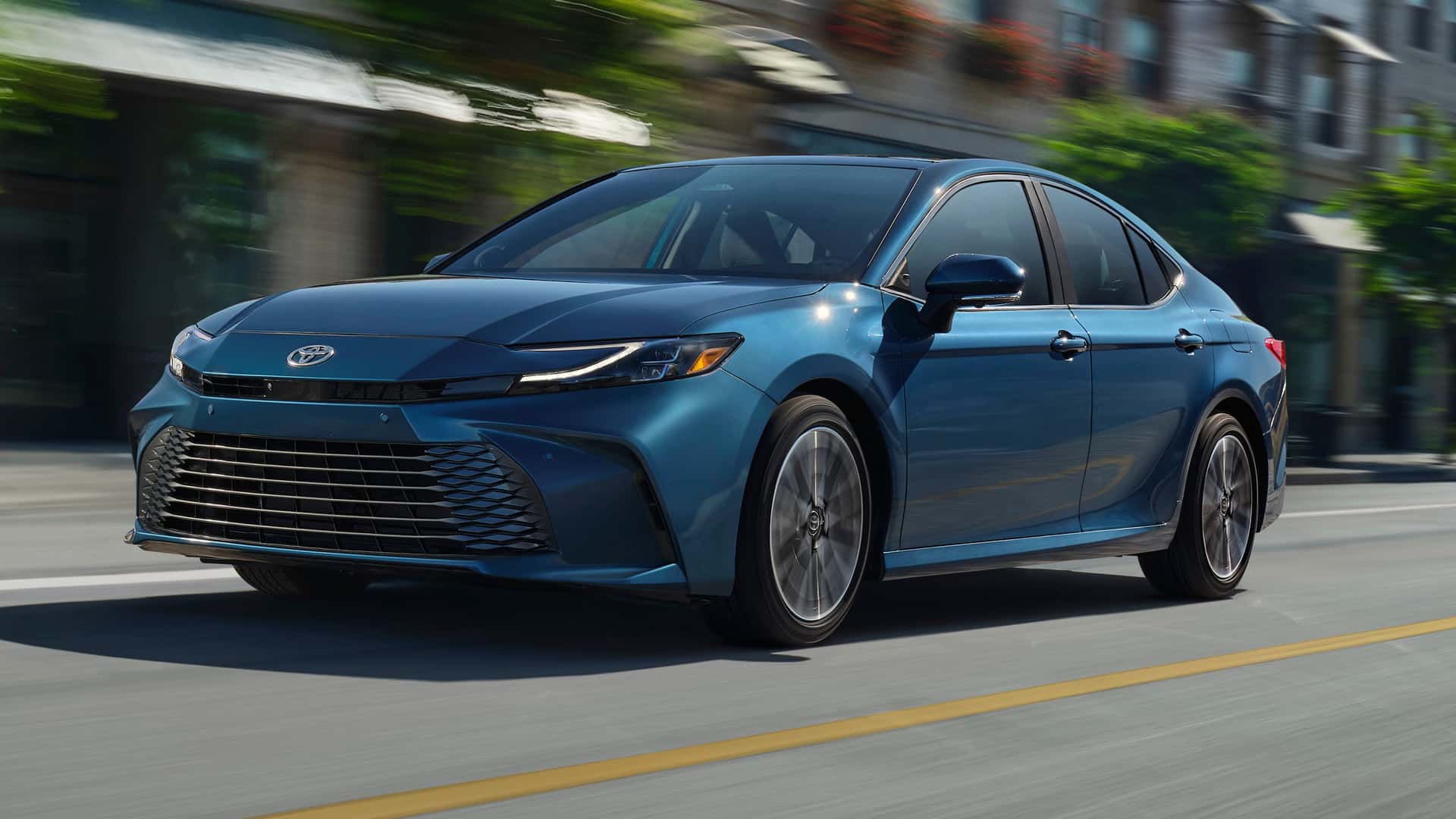
Toyota isn’t resting on past accolades for 2025: This generation’s redesign gives the Camry a distinctly sharper and more contemporary feel.
Toyota has made a decisive move by fully committing to hybrid powertrains, discontinuing the V6 and TRD trims that once gave the Camry an extra dose of performance flair.
The emphasis now lies on efficiency and everyday usability, with the front-wheel-drive variants making 225 horsepower, while all-wheel-drive models deliver a bit more at 232 hp.
V6 fans may feel the sting of its departure, especially those who appreciated the naturally aspirated grunt, but the hybrid system’s seamless performance and fuel economy are undeniable benefits.
In a highly competitive midsize sedan market, the revamped Camry proves that reliability doesn’t have to come at the cost of excitement — especially with a completely overhauled interior that adds upscale appeal.
With these changes, the Camry is positioned to lead the pack — but does it still have what it takes to stay on top?
Toyota has officially phased out its conventional internal combustion engine offerings, including the V6 that featured in previous models.
Every 2025 Camry now runs on Toyota’s fifth-generation hybrid powertrain, which is available in two output configurations depending on whether you go with front-wheel drive or all-wheel drive.
The bold new exterior includes a revamped grille, sleeker body lines, and a more dynamic overall stance — transforming the Camry from something your grandfather might drive into a sleek, modern sedan that wouldn’t look out of place in a corporate parking lot.
Inside, you’ll find upgraded materials, new technology, and better insulation for a quieter ride. Recalibrated suspension and more responsive steering enhance the driving experience, and Toyota Safety Sense 3.0 comes standard across every trim.
Rounding out the improvements are an updated infotainment interface and an optional head-up display, both of which help make the 2025 Camry feel more refined and up to date than ever.
The 2025 Camry kicks off at $28,400 for the entry-level LE trim. If you prefer a sportier flavor, the SE is priced at $30,700. The more luxurious XLE trim lands at $33,400, while the fully loaded XSE tops out at $34,600.
All trims come standard with a CVT and front-wheel drive, and adding all-wheel drive tacks on $1,525. Keep in mind, these figures do not include Toyota’s delivery, processing, and handling fee of $1,135.
Toyota’s pricing strategy isn’t just competitive — it’s aggressive. For under $35K, buyers can get their hands on a top-tier XSE model packed with hybrid efficiency, high-end features, and Toyota’s reputation for excellent resale value.
Compared to many of its rivals, the Camry often delivers more for less. Add in the long-term savings on fuel thanks to the hybrid powertrain, and the sticker price starts to look like an even better deal. Fewer trips to the gas station only sweeten the pot.
Also Read: Best 10 4&4 Cars to Drive in 2025 Offering Comfort and Off-Road Capability
4. Mercedes-Benz E-Class (W124)
The earliest versions of the W124 actually came before Mercedes-Benz began using the “E-Class” designation, and it hails from an era when the brand was focused on engineering excellence above all else.
Produced between 1984 and 1995, the W124 gained a reputation for being practically indestructible.
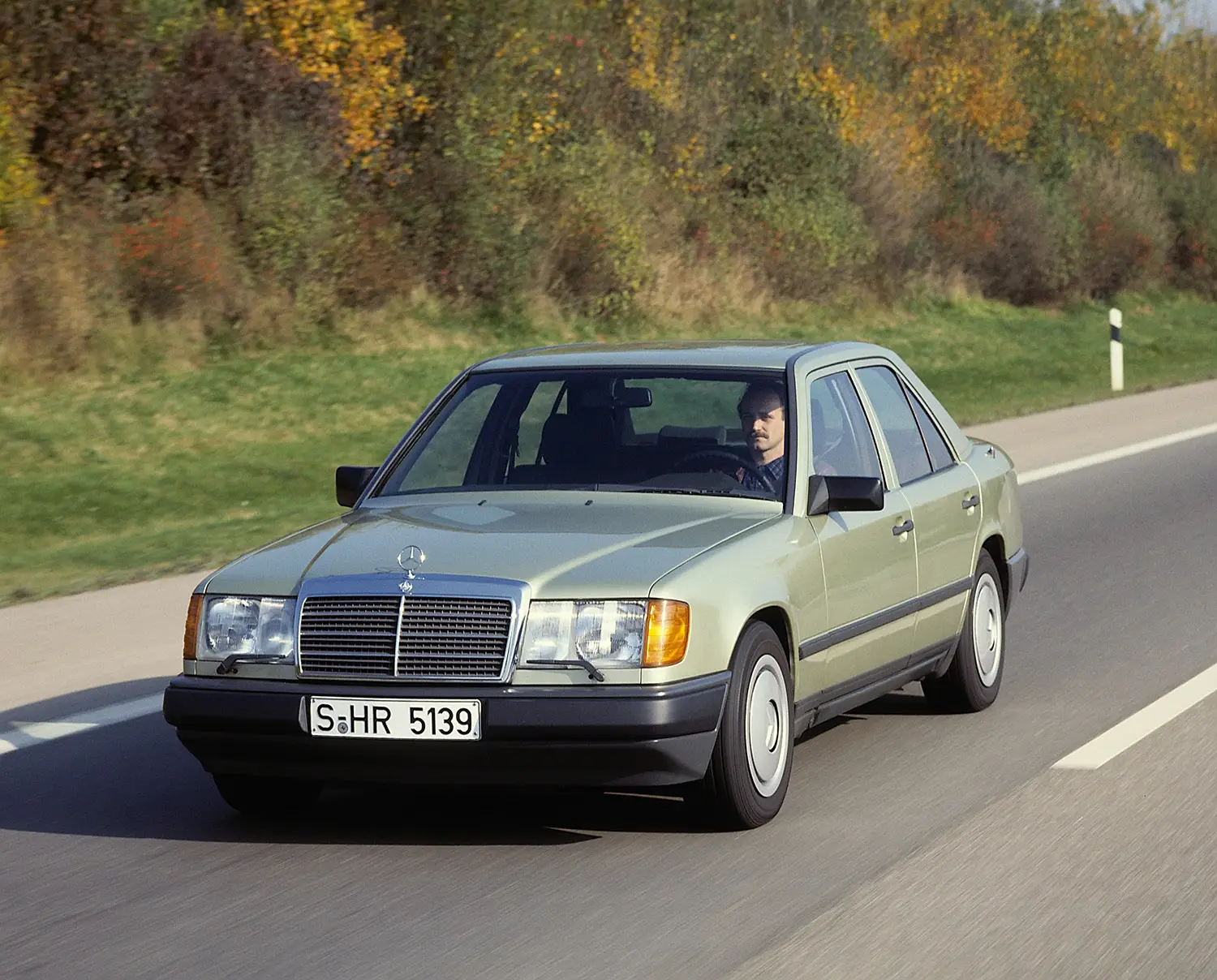
The diesel-powered variants, in particular, are celebrated for their longevity, although none of the models from this generation are considered problematic.
These cars are known to exceed 500,000 miles with minimal upkeep. Of course, the most coveted version remains the 500 E (later rebranded as the E 500), developed in collaboration with Porsche.
But if you’re seeking an affordable, dependable daily driver from a time when Mercedes still prioritized genuine luxury, the W124 is an outstanding choice.
5. Honda Civic
Although the Toyota Corolla hit the market a few years before the Honda Civic, the two have a lot in common. Their reliability stems not only from their simple designs but also from the thoughtful approach to the ownership experience.
At its core, the Civic was conceived as an affordable and durable option something that’s increasingly rare in today’s automotive landscape. Honda then mastered the ability to mass-produce reliable vehicles, a feat that even some legacy carmakers still struggle with.
Additionally, Honda made sure that replacement parts were readily available and affordable, which kept maintenance costs low. As a result, owners had little reason to skip routine service, helping preserve the car’s long-term reliability.
What’s even more impressive is that this standard applies across the entire Civic lineup, including high-performance models like the Type R. Every variant is built to a high standard, making the Civic an ideal option for first-time car buyers or anyone shopping on a tight budget.
The 2025 Honda Civic strikes a solid balance between practicality and a hint of excitement. Drivers will appreciate the engaging handling dynamics, while the spacious and upscale cabin provides comfort for all passengers.
Though not without its flaws, the Civic stands out as a top-tier compact car. The interior is roomy and features high-quality materials, and the car’s handling is fun and responsive.
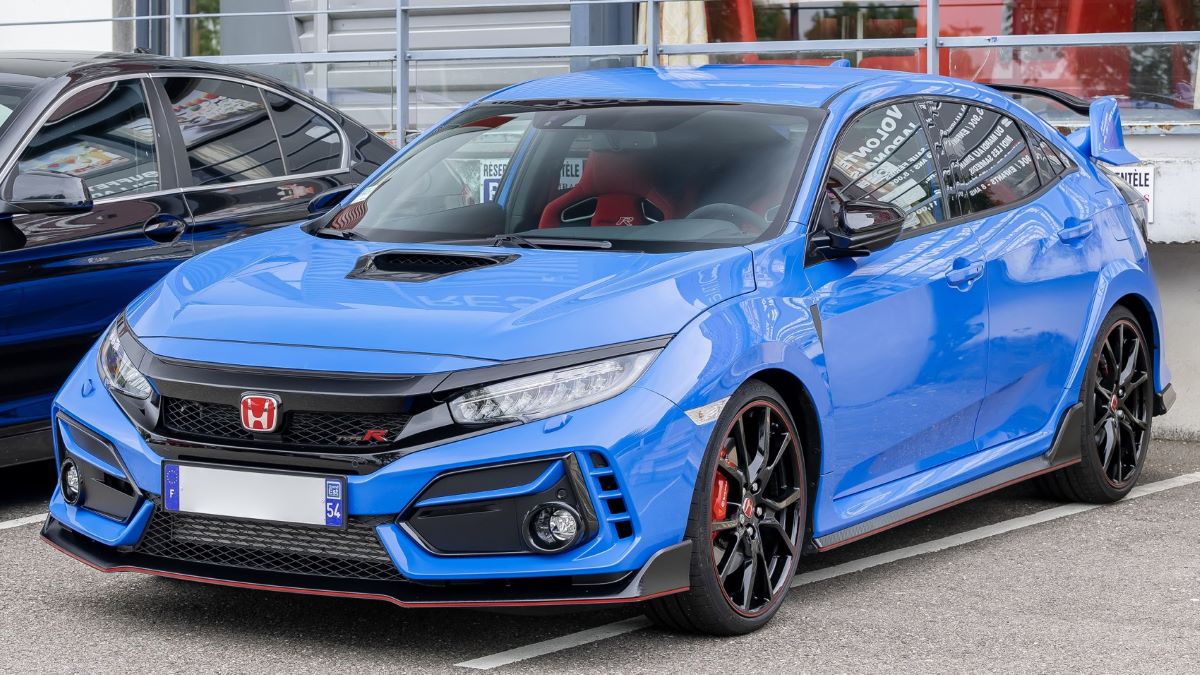
The fuel efficiency is excellent, and the infotainment system is intuitive and easy to use. On the downside, the base engine feels underpowered, and there’s noticeable road noise, especially at higher speeds.
Additionally, the Civic’s pricing is on the higher end of the compact car spectrum. For 2025, the Civic undergoes several updates, including refreshed interior and exterior styling and a simplified trim lineup.
The optional turbo-four engine has been discontinued, and now, every Civic comes with a 150-horsepower four-cylinder engine, available with front-wheel drive. It continues to be fuel-efficient, with a range of 31-32 MPG city and 39-41 MPG highway.
The 2025 model seats five people and offers a comfortable, upscale driving experience. The Civic ranks highly in its category, coming in at #2 among compact cars and winning the 2025 Best Compact Car for the Money award.
Currently, the Honda Civic holds a solid rating of 9.2 out of 10, based on various factors such as performance, fuel economy, interior quality, and safety.
In terms of rankings, the Civic is priced between $24,250 and $26,250, competing closely with other compact options like the 2025 Mazda3 and Hyundai Elantra.
The Civic performs well in terms of reliability, safety, and fuel efficiency, with a critics’ rating of 9.3. When it comes to drive and performance, the Civic strikes a nice balance between comfort and fun.
Its steering is well-weighted for easy maneuvering, yet it’s still responsive enough to take on winding roads. The ride quality is generally comfortable, although the slightly firm suspension can cause occasional bumps.
The base 150-horsepower engine is sufficient for most driving scenarios, providing smooth operation on highways and impressive fuel efficiency due to the CVT.
For those seeking more performance, the Si model steps up with a 200-horsepower turbocharged engine and a six-speed manual transmission, making it a more spirited option for driving enthusiasts.
Lemons From The Last 20 Years
The lemon is an odd concept and an even odder word for something that isn’t just a tart citrus fruit. But what exactly is a lemon? In the world of automobiles, it takes on a completely different definition.
When a car is called a lemon, it quite simply means it’s bad. Often extremely bad, in fact. It’s the type of vehicle that takes up space on the roads without offering anything of value, a car that feels more like a punishment to its owner.
Or worse, it feels like it doesn’t even exist, much like many vehicles released in the late 1990s and early 2000s.
What makes lemons especially frustrating is that some go beyond just being faulty or underperforming.
There’s an especially disappointing class of lemon those soul-draining, mass-produced products of consumerism that seem to exist for one reason alone: slick marketing and a low, attractive price tag.
These kinds of vehicles should never have been allowed on public roads, yet they’ve managed to linger for years. They continue to drag along with mediocrity, completely void of charm or personality.
They are still with us visually offensive, lacking identity, unworthy of nostalgia and yet somehow still remembered, despite the fact that they offer absolutely nothing worth remembering.
So let’s shine a light on some of these automotive misfires. Let’s identify them for what they truly are whether it’s due to dull design or a track record of unreliability. Here’s a lineup of 5 lemons of the last twenty years that are still on the roads, and no one knows why.
1. Toyota Echo
The Toyota Echo is a rare flop from a company that usually avoids producing lemons. But a single glance at its awkward shape, odd proportions, and clumsy stance makes it clear why this model stands out—and not in a good way.
As explained, “Some might call the car ahead of its time, but let’s face facts, the Echo wasn’t a very good car. Some of its innovative features still haven’t caught on.
Being green never hurt so bad.” A misfire from an otherwise reliable brand, the Echo is undeniably one of their most forgettable creations.
The Toyota Echo features a petrol engine with a displacement of 1497 cm³ (91.4 cu-in), powered by an inline 4-cylinder configuration, specifically the 1NZ-FE engine code.
This engine produces 110 PS (109 HP / 81 kW) of power at 6000 rpm and a maximum torque of 142.0 Nm (104 lb-ft) at the same engine speed.
The vehicle is equipped with a 5-speed manual transmission and utilizes a front-wheel-drive (FWD) drivetrain. The engine operates with a multi-point fuel injection (MPFi) system, and its compression ratio is set at 10.50.
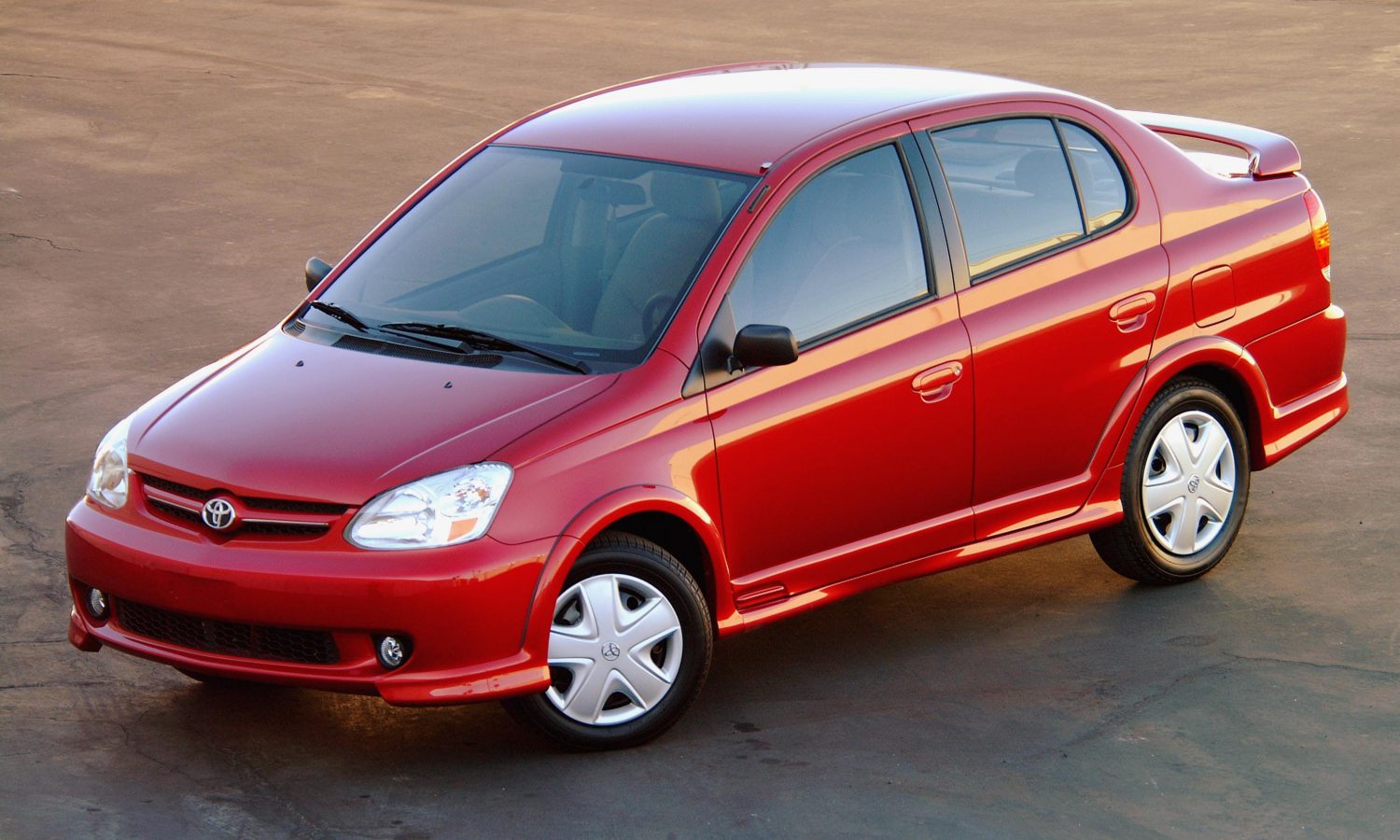
The engine’s bore and stroke measure 75.00 mm x 84.70 mm (2.95 x 3.33 inches), with 16 valves and a naturally aspirated configuration. The Toyota Echo’s fuel tank has a capacity of 45 liters (11.9 US gallons / 9.9 UK gallons), and the car is equipped with a catalytic converter for emissions control.
In terms of size, the Echo has a wheelbase of 237 cm (93.31 inches), a length of 418.6 cm (164.8 inches), a width of 166.1 cm (65.39 inches), and a height of 150.9 cm (59.41 inches). The front axle measures 144.5 cm (56.89 inches), while the rear axle is 142.0 cm (55.91 inches).
The ground clearance is 11.9 cm (4.69 inches), and the aerodynamic drag coefficient is 0.290. The vehicle’s curb weight stands at 923 kg (2035 lbs), and its weight-to-power ratio is 8.4 kg per horsepower.
The Echo features a braking system with vented disc brakes at the front (253 mm / 9.96 inches) and drum brakes at the rear (180 mm / 7.09 inches). Both the front and rear tires are 175/65 R14 in size, and the wheel width is 5½” at both ends.
The steering system is a rack and pinion setup with power-assisted steering (PAS), requiring 3.800 turns from lock to lock. The front suspension uses MacPherson struts, while the rear suspension is a torsion bar setup.
2. Scion TC
Although the Scion TC doesn’t top the list in terms of sheer awfulness, it still baffles many as to why it turned out so poorly. It was supposed to be something simple and appealing a compact, sporty coupe that maintained a sense of practicality.
But it fails on most fronts. The TC suffers from “a weak, buzzy power plant, wallow-y, rolling handling, and a cheap and noisy interior.” It’s disappointing, especially considering that plenty of similar cars have managed to get it right.
The Scion tC and I didn’t exactly hit it off from the start, especially when I made the mistake of taking it grocery shopping.
After all, it’s a hatchback, right? Well, most hatchbacks come with a cargo cover that has a hinge at the front and strings that attach it to the hatch lid. When you open the hatch, the cover swings out of the way.
But not the tC. The tC’s cargo cover is a strange mix of cardboard, plastic, and faux-dog-hair, and it has three positions: 1) In the way; 2) completely in the way; and 3) angrily tossed into the back seat.

To get to the hatch, you have to lift the cover yourself, at which point the plastic clip detaches and, in a manner that seems almost intentional, shouts, “Hey guys, you’ve got to try this!” The other clips join in, and the whole thing crashes down into the trunk faster than you can let out an expletive.
Reattaching it is no easy task—after five attempts and two dozen expletives, I decided to leave it in Position 3. By the time I managed to load my groceries, the milk was already past its sell-by date.
Despite this frustrating start, I was willing to overlook the tC’s quirks. I’ve always had a soft spot for other Scions. The xA is a fun little minicar, while the xB, with its boxy shape, serves as an excellent packing crate.
Even with some of the more ridiculous options (multi-colored illuminated cupholders, anyone?), these cars have a cheap-and-cheerful charm that’s hard to resist. The tC, however, felt a bit out of place, almost like it had been adopted. And in a way, it had.
Both the xA and xB are based on the Toyota Echo, but the tC’s design comes from the European-market Avensis, which has the unfortunate distinction of being pretty unattractive (imagine a Camry wearing an ill-fitting Passat costume).
Toyota’s attempt to make the tC feel like part of the Scion family is only half-hearted; the rear end has a bit of Volvo in it, while the side has a touch of Audi TT. Only the front end seems somewhat familiar. When you put it all together, it’s clear which cars Toyota favors: the small, cute ones.
Still, everyone who saw my test tC couldn’t help but rave about the styling. Its proportions are certainly spot-on, offering a compact size and stance that appeals to speed-oriented drivers.
I’ll admit that it’s a good-looking little car in a budget-friendly way, though I’m not sure you’d remember what it looks like five minutes after you walk away. Wait, let me take another look at the picture… maybe not.
Inside, the tC is even less Scion-like. The gauges are traditionally placed, unlike the funky, centrally-mounted dials found in the xA and xB (which seem like they might shift to the left when those cars hit puberty).
The goofy lights are kept to a minimum. The tC also shares the family’s impressive sound system, which is loud enough to make nearby Cessnas take evasive action.
While the center stack may look like it’s made of the same metal-effect plastic used for Build-Your-Own Robot kits, the controls are ergonomically sound. Overall, it’s a comfortable and practical space to spend some quality time driving.
3. Pontiac Grand Am
When it comes to the Pontiac Grand Am, there’s little that lives up to the “grand” in its name except maybe the grand scale of its shortcomings. Despite this, the car achieved some level of commercial success, and as a result, we still come across these eyesores far too often.
Pontiac’s plastic obsession continued with this affront to any sort of design intelligence. Doubling down on the Rubbermaid styling with plastic cladding galore, this time they paired front-wheel drive with an anemic 4-cylinder engine. In other words, it’s the textbook definition of a lemon.
In 1973, General Motors embarked on a wave of brand-engineering innovation, creating over a dozen different nameplates from a single new platform known as the A-body.
While most of these vehicles were unremarkable products of a challenging era in American automotive history, one car, the Pontiac Grand Am, stands out as a fascinating relic of a path not taken.
Despite its name, which suggested a blend of the Pontiac Grand Prix’s luxury and the Pontiac Trans Am’s performance, the Grand Am was envisioned as an American interpretation of the refined handling and sophisticated interiors typical of premium European cars.
To this end, the Grand Am came equipped with features like radial tires, a sport-tuned suspension, bucket seats, a hefty steering wheel, and even a Euro-style high-beam switch mounted on a stalk off the steering wheel rather than the usual floor-mounted button.
“Except for the Firebird/Camaro and Corvette,” a contemporary magazine raved, “there is no car built in America that handles as well as the Grand Am, and certainly nothing at all that comes close to it in size. The car is pure pleasure to drive.”
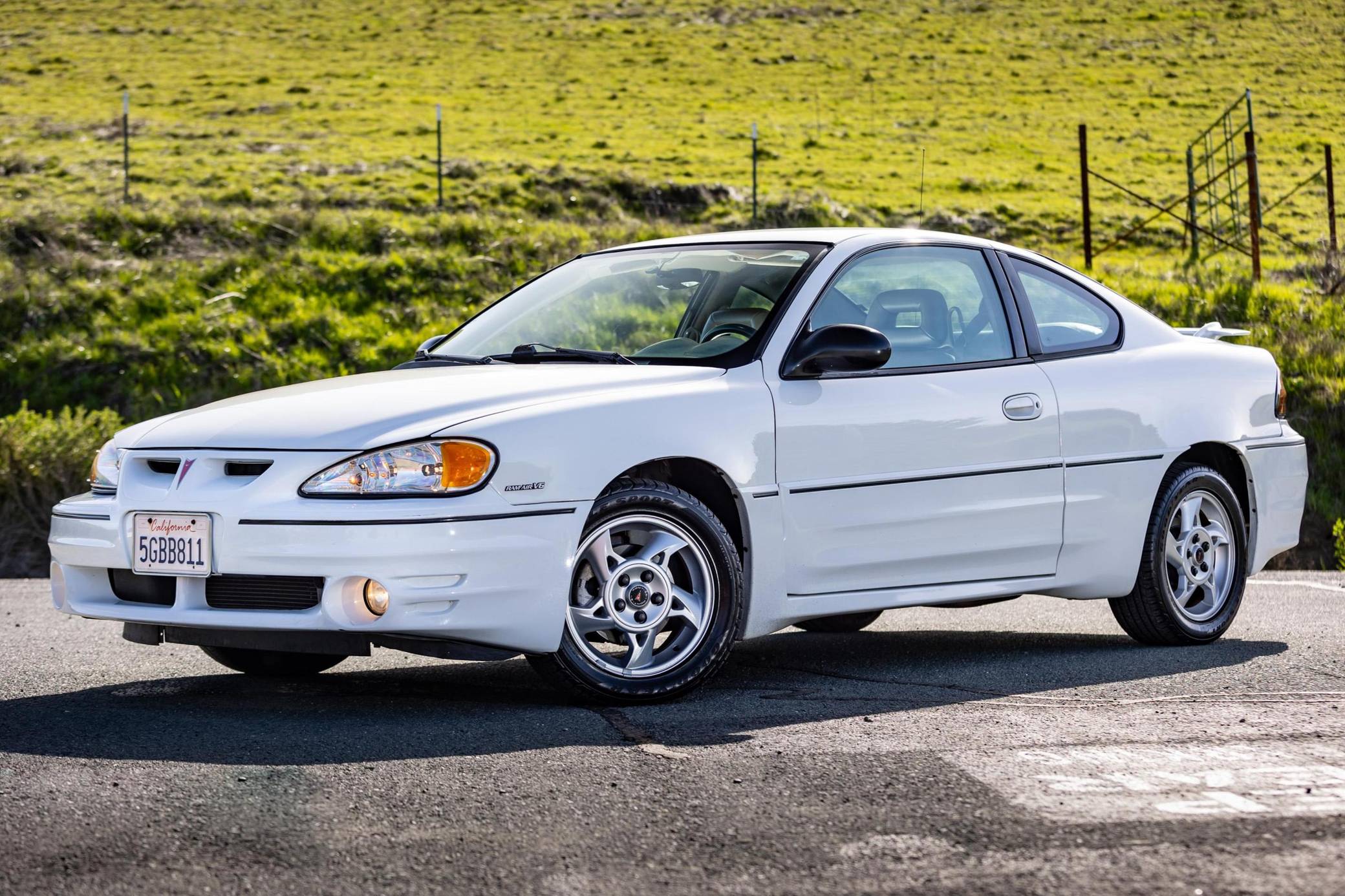
What truly set the Grand Am apart, however, was its styling. While it shared its basic structure with the Buick Century, Chevrolet Chevelle, and Oldsmobile Cutlass, the Grand Am had a distinctly unique look.
Like the Pontiac LeMans from which it was derived, the Grand Am featured the classic long hood/short rear deck proportions.
But its defining features included a six-piece “catwalk” grille, louvered B-pillars, and a distinctive graphics package. Most notably, the Grand Am sported a unique front end, a characteristic feature of every Pontiac since 1959.
The car’s V-shaped hood culminated in a dramatically sculpted prow, which was made from soft, injection-molded urethane that could bounce back into shape after a low-speed impact. This innovative design replaced the conventional metal bumper.
“The lines of the car are beautiful,” says John Alden, the owner of a 1974 Grand Am, which still attracts attention whenever he takes it out for a drive. “And it looks so different from anything else on the road.”
In 1973, the base price of the Grand Am was $4,263.50. This was roughly $1,000 more than a Pontiac LeMans or Oldsmobile Cutlass, but only half the price of a BMW Bavaria, a Jaguar XJ6, or a Mercedes-Benz 280C.
Even with a full set of options—including the powerful 455-cubic-inch (7.5-liter) pushrod V-8, cruise control, air conditioning, and the essential eight-track tape player—the total cost was still under $6,000.
In 1981, Ron Berglund, a longtime Pontiac enthusiast from Fresno, California, purchased one of these fully-loaded Grand Ams for just $500. After driving it for two years, he decided, “You know what? This is going to be a valuable car someday, so I’m going to restore it.”
Also Read: Top 10 High-Performance Automatic Cars of 2025
4. Ford Explorer
This vehicle was the catalyst for the sweeping crossover craze that has dominated the U.S. automotive landscape since its debut and it’s hard to disagree.
Here’s how they put it: “The Ford Explorer is responsible for setting this country on the spiral of vehicular obesity that we are still contending with today.
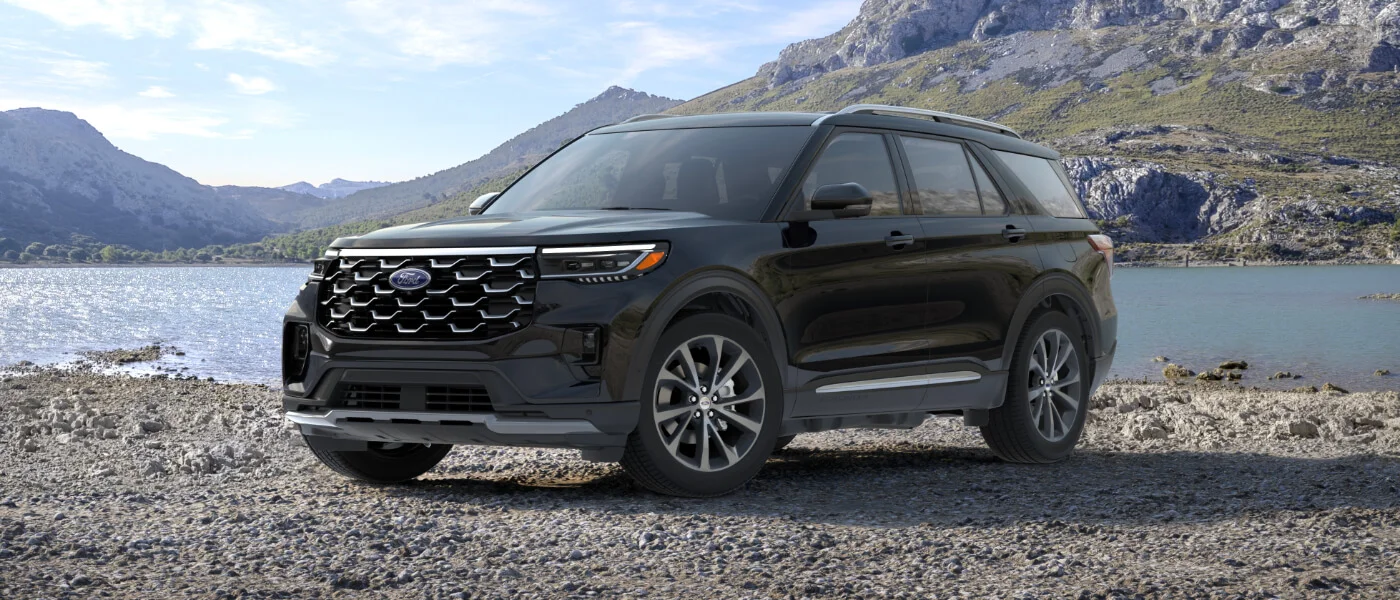
People, particularly women drivers, discovered that they liked sitting up high.” Despite the availability of more efficient alternatives, consumers continued to favor the SUV. In essence, it seems the elevated driving position became a widespread obsession.
5. 2004 Kia Amanti
There was a time when Kia wasn’t known for quality or popularity. The brand was still finding its footing, and during that period, it managed to push a number of less-than-stellar vehicles into the market cars that were, frankly, lemons.
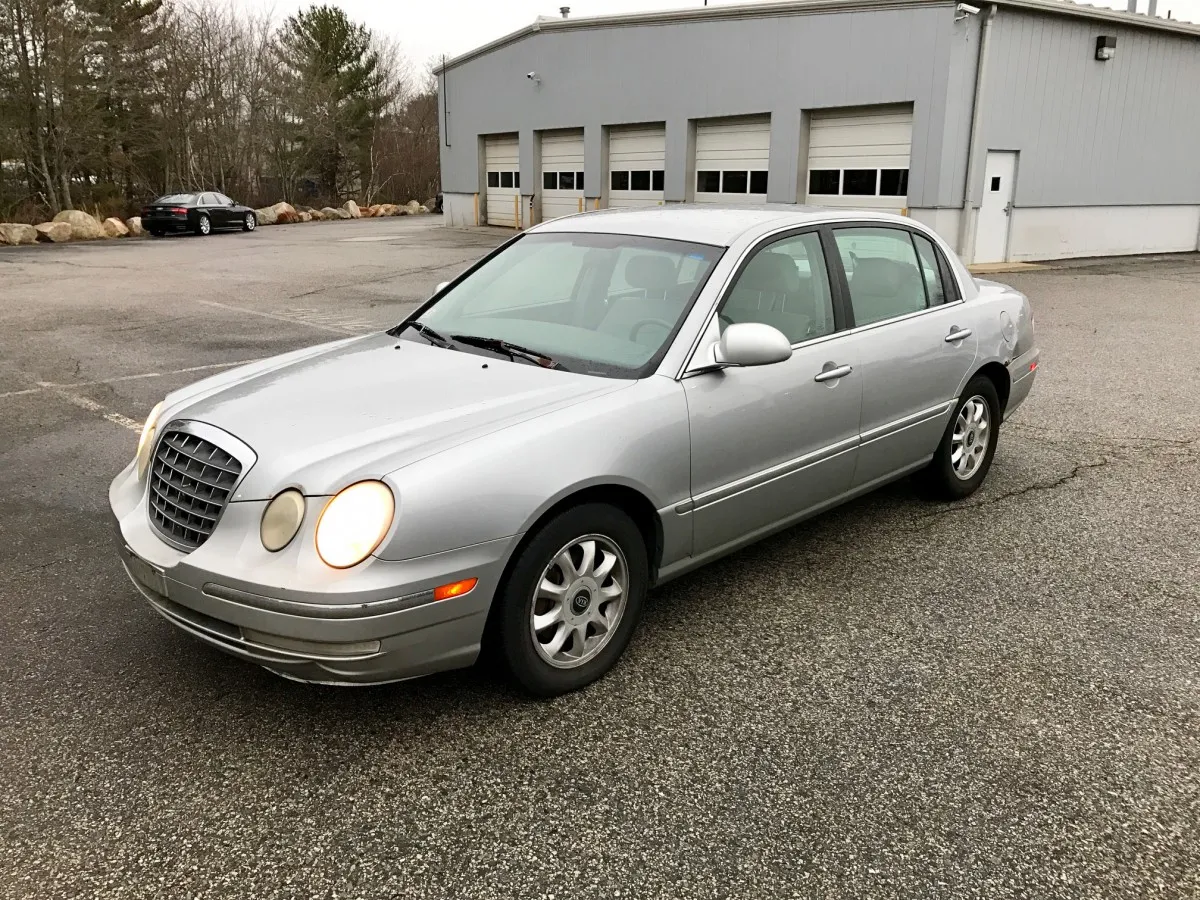
One such example is the Amanti. As Top Speed puts it: “The car was bad looking inside and out, drove like a bus, and weighed as much as one too.”
This model represented Kia’s early foray into the luxury segment, aiming to stand alongside brands like Honda and Toyota. Unfortunately, what they delivered was a total misfire a lemon that somehow still clings to the roads today.

